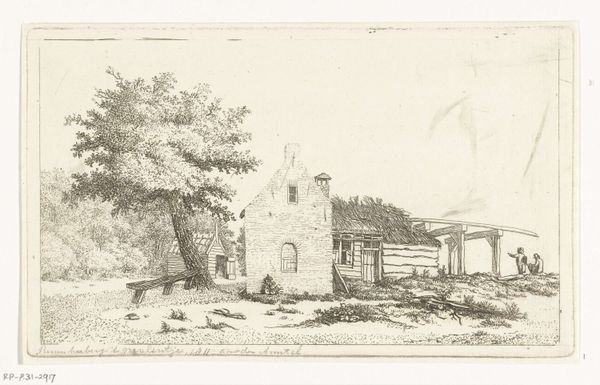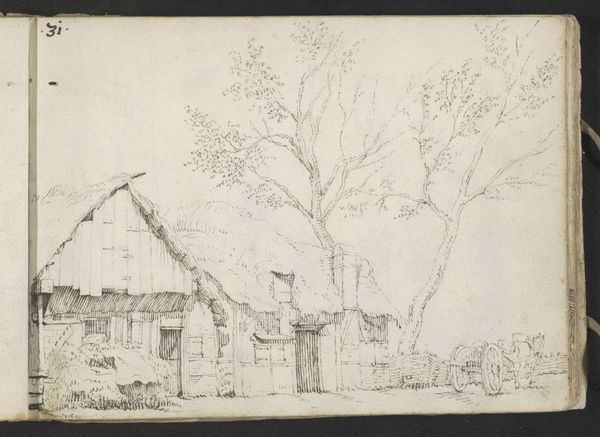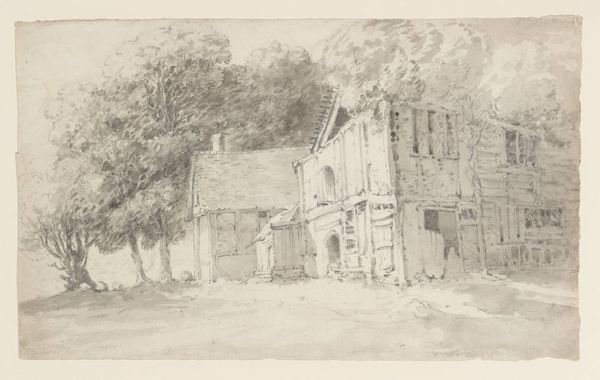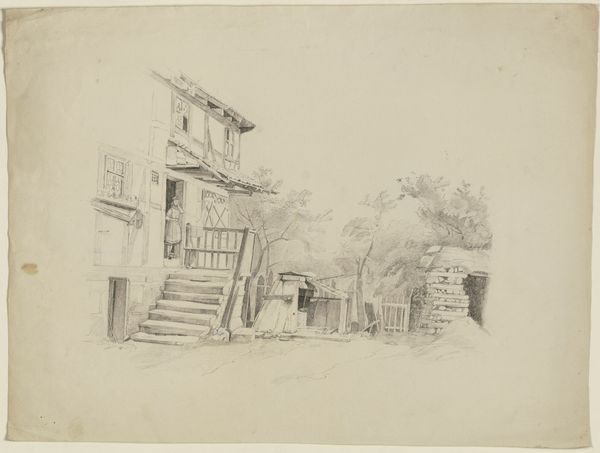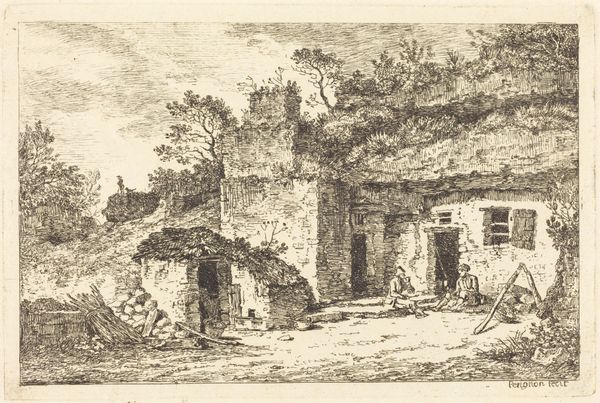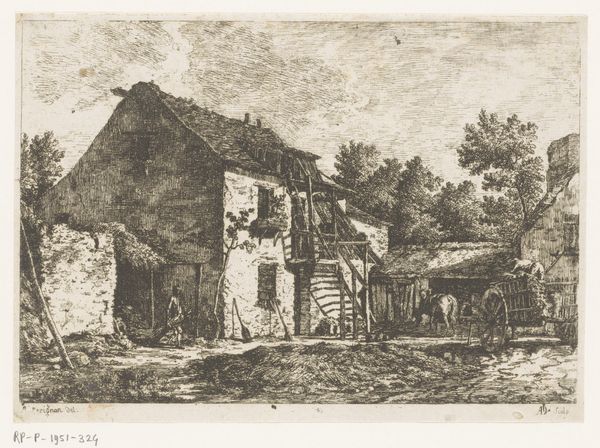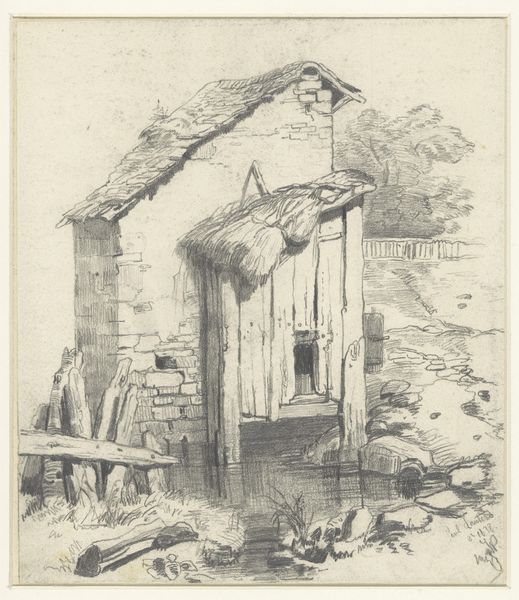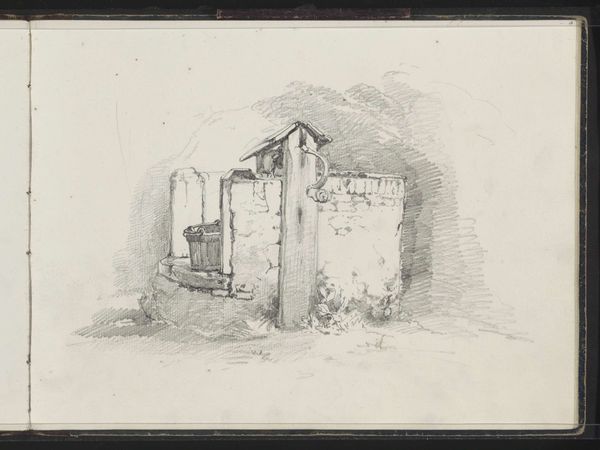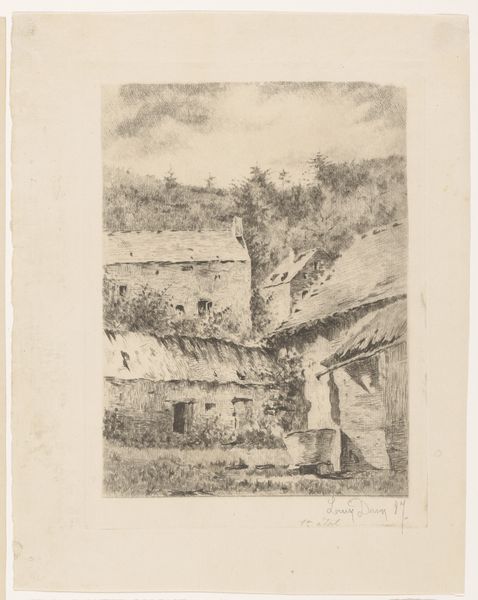
drawing, paper, ink
#
drawing
#
baroque
#
landscape
#
etching
#
paper
#
ink
#
cityscape
Dimensions: height 254 mm, width 361 mm
Copyright: Rijks Museum: Open Domain
Curator: Jan Asselijn's "Pleisterplaats in Italië", created sometime between 1620 and 1677, captures a scene of quiet, perhaps even desolate, beauty. Rendered in ink on paper, it's currently held in the Rijksmuseum collection. Editor: There’s something incredibly still about this. The muted tones create a sense of timelessness, almost as if we're peering into a memory, a world beyond our reach, but yet intimately human in its ruin. Curator: It is interesting to consider Asselijn's choices here. The subject, a "resting place" in Italy, may speak to the influx of travelers and artists to the area, and how the cultural perceptions were morphing. What are the implications of highlighting a place of rest amidst probable commercial hustle? Editor: Absolutely. By the Baroque period, Italy had become the heart of the artistic pilgrimage. I think framing this artwork through a contemporary lens of mass tourism could offer us great insight here. What narratives about access and privilege does this ruin create, given Asselijn's probable access and station in life? It can be both sentimental and exclusionary, couldn't it? Curator: Yes, but look also at how Asselijn focuses less on grand monuments but everyday spaces where travelers could refresh themselves. It shifts the emphasis. This also ties to the development of landscape painting as a genre and it’s increased market appeal and circulation at this time. His choice to capture a commonplace area challenges traditional depictions of grand Italian architecture. Editor: Precisely. It's that tension between the romantic allure of Italy and the very real, often unequal, socio-economic contexts that I find so fascinating. Asselijn provides a very grounded image to work through these questions of identity, particularly in how Dutch identity engaged with the Mediterranean. The composition invites us in, but whose experiences are really being valued? Curator: Indeed. It is also remarkable how he created such atmosphere with ink, how that brown wash evokes the very earthiness of the Italian countryside in a period when Italian art became so dominant on the international scene. Editor: Ultimately, it pushes me to rethink not just our vision of Baroque landscape art but also our contemporary tourist gaze: who profits and who is left in ruins? Curator: A stimulating consideration, providing a rich perspective on Asselijn's world and our own.
Comments
No comments
Be the first to comment and join the conversation on the ultimate creative platform.

